Madness and poetry, the pinhole portraits by gUi mohallem
gUi mohallem is a Brazilian photographer whose pinhole portraits about madness have caught my attention from the very first moment I saw them.
In addition to his dark, intense and blurred photos, I greatly appreciated the accompanying texts: quotes collected during his discussion with the portrayed people. I have always been fascinated by writing, as well as photography, the extracts gUi mohallem combines with images are as intense and lapidary modern poems, a form of poetry that is collectively created by people telling their truth in front of the camera.
Fabiano Busdraghi: How did you start taking pictures? What is your history as a photographer?
gUi mohallem: I think I was 17 when I got my first camera. I went on exchange to Australia to study in high school. That’s when I first studied media and I did a documentary about the exchange program. When I returned to Brazil, I was fascinated by film making and decided to apply for Film School in São Paulo.
Photography was already a hobby and I had already started to visit studios and mini labs in my home town. I remember when I first saw an image coming on the white paper inside the last B&W darkroom in town. It was magic! At this time I was already interested in the destruction of the image and I would experiment all sorts of chemicals available on processed paper, to see how they could affect them. Once I could control it I started writing on my images and make customized cards for my friends and lovers.
Photography came to me in University, starting the following year. I was addicted to the darkroom. And I loved testing things and making all sorts of mistakes. I also loved the taste of the chemicals on my fingertips.
I graduated specializing in cinematography and photography. I would spend a lot of extra time inside the darkroom. I was so much in there I eventually got the spare key and the grant to use the special enlarger, an impeccable Leitz.
Fabiano Busdraghi: I love the smell of chemistry too, and I remember that my first print in the darkroom was really a magic moment as you described. And a little bit of that magic is always present today when I shoot or print, even if it is digitally. But let’s go on with the second question: what is photography for you?
gUi mohallem: Photography is the way I try to pacify my deepest solitude, I think. It gives me the illusion I can communicate with people, really. I will never know for real, but this illusion keeps me sane.
The other day, very recently, I was in the subway in NYC and I saw this girl with the hula hoop and she looked so sad and so tired holding it in her arms. I took 3 pictures. Then some people came to talk to her. It was Halloween night. And it turned out she was not sad at all and not tired at all. When the train came I started to talk to her. I was amazed by how much of this scene I had build by my own fantasies. She wanted to see the pictures, she was concerned about her image and I replied, without ever thinking about it: “Don’t worry, I didn’t take a picture of you, I only borrowed your body to portrait my own feelings.”
Fabiano Busdraghi: I agree, photography almost never show the truth, but just ours feelings, ideas, and point of view. You also said photography is the way to minimize your solitude. As you I think it is a wonderful way to communicate, to let other people look inside you. But sometimes I think photography increase my solitude, sometimes I am like a slave of photography. During the huge amount of time I spend inside the darkroom, or retouching, or searching the perfect combination to express my feelings, or even writing this blog, I’m always alone. All the time I spend in those activities is time subtracted to my social life. Other people on the contrary are able to use photography to interact with other ones, maybe as you did with the girls in the underground. What do you think about that?
gUi mohallem: I don’t think it worked as interaction. She was not aware and she wasn’t ever her for me. I was interacting with myself. I don’t run away from loneliness. At the same time I search for relief from it I also need it a lot. Hard to explain. In that way maybe that’s why I travel.
Rainer Maria Rilke once wrote
…there is only one solitude, and it is vast, heavy, difficult to bear, and almost everyone has hours when he would gladly exchange it for any kind of sociability, however trivial or cheap, for the tiniest outward agreement with the first person who comes along, the most unworthy… But perhaps these are the very hours during which he grows; for his growing is painful as the growing of boys and sad as the beginning of spring. But that must not confuse you. What is necessary, after all, is only this: solitude, vast inner solitude. To walk inside yourself and meet no one for hours – that is what you must be able to attain. To be solitary as you were when you were a child…
Fabiano Busdraghi: How the idea of Reharsal to Madness was born? Can you describe this work?
gUi mohallem: That is a tough question. Cause it wasn’t born of a single insight. It came little by little. I’ve had this title for a while ( they usually come first) when I saw one of my aunties having an outburst. I keep my tittles written and all of a sudden I do something that fits them. Usually the tittle comes one or two years in advance.
This one waited 5 or 6 years. I was already experimenting with digital pinhole and motion when I met Juan Betancurth, a Colombian artist based in NY. The first day we went for a walk, we talked for 7 hours and we were talking about very intimate stuff. Two days later we were at the rooftop of his workplace and we had a very nice shoot, although there was very little light for it.
I kept shooting people I fell compelled to do so, but I was somewhat unaware of the reason that was driving me to do it. Till one day at a bar, talking to Juan and his boyfriend that I understood. I was shooting these people because of what they said to me. This work was also about these experiences.
Fabiano Busdraghi: This is a point of particular interest. Why did you decide to combine photos with written words? What are the consequences of this choice?
gUi mohallem: It was natural. It came naturally to the work, as I understood what make me want to portrait some people and not other people.
But this project has been going through different stages of awareness, if I can say that. At first, I only went with my guts. And I remembered the quote by heart, because they were the feelings that were stuck with me. Then, on the process of editing these pictures, choosing and combining them with the quotes I slowly understood I was talking about my madness. Just like the girl on the subway, I was borrowing these people images and words to talk about myself, in some level.
Madness here gets a very specific meaning. Whereas one may use it as distance I use it in a sense of proximity. Mad is what is similar.
Making new work once I was aware of that was really a challenge. At one point I went to my hometown and shot my parents. I was pushing my boundaries. When I had the show in NY I was still uncomfortable with some of the newest images. The work was talking back to me so I spent a lot of time in the gallery just to listen.
When I was preparing the show, the hardest thing was to decide how to put the text with the images. I like to ask the viewer some kind of attitude, some kind of demand on what he’s looking at. Also, I like to give the viewer the option not to see if he wants to. As these are very intimate quotes I didn’t want them to be taken for granted. People should only see it if they were connected with the specific image. In my website, you only see the quotes of you roll over the image, for example. In the NY exhibition I developed a series of stamps. In order to see the quote, people would have to stamp themselves, get contaminated with madness.
And also, it was hard to see all the quotes from all the images. People would then have to choose with images they were more driven to investigate, to find out about. I was apprehensive with this but the response was amazing. People would stamp themselves all over. They wanted to find out.
In the artist talk we did, Shawn Lyons, the gallery owner who invited me for the show, convinced me to open subscriptions for the project. People who wanted to be portrayed as one of my new madness could sign up for an interview and a possible shoot. People that had come to the show, people that heard about it from friends, new people I met, I started to get these emails asking to be part of the project.
Then, it reached a stage where I was photographing total strangers. I spent the following weeks interviewing and shooting these strangers that now I feel so close to. Out of the 8 or 9 people I interviewed there was only one I decided not to shoot. Because this person didn’t let me close enough.
I am very excited about this new material. That’s why I decided to open subscriptions to the public on my website. Anyone who’s interested in being part of it can fill in this very simple form, and it does not matter where they are from. As I travel quite a bit, next time I am around their city of country, I’ll arrange the interview. Those selected who take part in the project will receive a signed print of their photos in an edition of 01. That’s the way I found to say thank you.
The joy that I get from this experience is overwhelming, it’s amazing. I wanna do this for a while.
Fabiano Busdraghi: I hope one day we will meet and you will accept to shoot a portrait of me! This is a nice example of how photography can let you interact with others people and reduce your solitude!
gUi mohallem: We could surely do. First the talk, then the shoot. The best part from me is the the part where I get to hang out with the person. Because you would have to take me your favorite place, somewhere important for you. In that way I get to know a world I would never have access otherwise. The other person’s world. But this is not where the loneliness ends. It is hard to explain. I get the soothing feeling when we talk and I feel the person is also a little crazy. Then I am not alone. There’s someone out there a little like me.
Fabiano Busdraghi: All the pictures of the series Reharsal to Madness are pinhole ones. Why did you decide to use a pinhole camera for your set of images? What in particular attracts you using this technique?
gUi mohallem: I don’t like the sharpness in digital images. It bothers me. When I shoot pinhole, though, it is much more like what I experience. It is close to my reality, if I can say that. Also, there’s this funny thing: by doing this, one eliminates one more thing between the subject and their represented image. The lenses. There is no chromatic aberration, or lenses distortion. There is light and hole and CCD. I like how simple and somewhat silly it is sometimes. That’s one of the reasons I made a pinhole tutorial in my website. The technique itself is not a big deal.
Fabiano Busdraghi: The pinhole photography seems to give access to a world of fantasy, to overturn the human perception and rewrite what is the reality. I think that photography in any case can never objectively describe truth, a little bit as you said before. Do you agree with this idea? Or do you think that photography can faithfully reproduce reality too?
gUi mohallem: The only reality one can try to describe is your own internal reality. That’s the only ethical way possible in photography. I give you my reality so you can build up yours.
Fabiano Busdraghi: You mount your pinhole holes on a digital cameras. Is it a matter of convenience, speed in verifying the results? Or is it the only way you can get this special result, for example through the possibilities offered by photo retouching techniques to change color and contrast? Or finally are you theoretically interested in a particular mix of really simple technique like pinhole, with the latest technology offered by digital cameras?
gUi mohallem: Well, to be really honest, I think it is a mixture of all three options. I do all my editing in Photoshop nowadays, even in my work on film, it is very much edited. I don’t use digital to my personal work usually. I think I like the wait. I like that I never know how the picture will come out. The other day I was shooting a friend for his CD cover and did it in both digital and film. Same lenses, same scenes, but the film pictures have a such a stronger feeling. I am still trying to figure out why.
With this project I usually keep the images unseen for a while, I tell people it is baked in slow oven.
I also like the way the grain in those pictures have a lot of digital in it. The camera is at it’s highest speed so there are a lot of artifacts. In Photoshop I control them and dim them a bit sometimes. But there are even some dirt that I leave on. I like some of the imperfections, it’s like life itself.
Digital is also great because it allows me to take a lot of pictures in a sequence of each person. It’s a very cathartic process for both of us. I only know which one to use after I have their quote. This may take up to a few months.
Fabiano Busdraghi: You teach pinhole photography with organizations offering career opportunities to under-privileged youth in Brazil. Can you tell how important is teaching for you? Is there any case in which photography has really changed the lives of these young people?
gUi mohallem: I have taught for about 4 years. I loved it. I was teaching cinematography, electricity and photography to these kids, so that they could get into the film industry in Brazil (more like TV adds and commercials). But what I was teaching didn’t matter really. It was just an excuse to provoke this kids to think for themselves, to build their own learning, to make their own path. Pinhole was the first subject. We would first turn the classroom into this huge camera and understand it from the inside. “So this is how the camera and the eye works” then I would introduce to them the photographic paper, testing the chemicals, making all the possible mistakes in purpose, in a way to build in these kids this passion for testing, and learning from evaluating the tests.
Two weeks of pinhole and darkroom followed and I would only help them from the distance to find the right questions, not the right answers. The great thing about pinhole was that every camera is unique. It has its own hole, it’s own distance from the paper and each student would shoot this one particular subject. They could not learn from anyone else but from their tests. It was a great joy to make their first image. Cause they had no one to thank it for, except themselves and their perseverance.
Once they understood how pinhole worked it was easy to start talking about light and its principles, about the eye, the camera, whatever. But the most important thing from this is that they now understood they were in a search for questions, not answers.
If you wanna know if they became great photographers, I can’t tell you that. I know there is one or two who connected me on their flickr. But many of them started to grasp their own life and grew professionally by being independent from whichever teacher or bosses they might have run into. I heard that two of them got enough money they have a car now.
Fabiano Busdraghi: You live in Brazil, but you’ve traveled also to New York and in several other places. What are the consequences of traveling on your life and on your photographic work?
gUi mohallem: Traveling drives me away of my comfort zone, my friends, my family, my workstation, and in addition to that I usually put myself in difficult situations. I usually stay at a stranger’s place. I don’t plan anything. I never know where I am going to sleep, for example. I also always travel by myself. I think it’s a search for loneliness.
When I am traveling I feel more connected with myself, it’s like an exile.
Fabiano Busdraghi: How is the photographic situation in Brazil? Are exhibitions and photography related events numerous and interesting? Is the cultural life active and interesting?
gUi mohallem: São Paulo is like any big center. there’s so much going on at the same time it is hard to decide where to go, cause you have to make options. I must confess I do not attend many of them, mainly because I am usually so focused in editing my stuff or finishing a project, I hardly leave the studio. I must say I would have to do some research to answer this question properly.
Fabiano Busdraghi: Do you think that to have a good photographic carrier one need to live in New York or London or today thanks to Internet the place where you live doesn’t really matter?
gUi mohallem: I like the Internet and I like all it’s possibilities of connection. I have found really amazing work and people through sites and blogs like yours. But I also think nothing substitute the real experience. I like to be in places and meet the people. I like to see how the work is mounted and presented. Seeing other people’s works, good works, is a major thing on one’s evolution as an artist. Sometimes books give you a fairly good idea, but take the works of Sophie Calle or Gregory Crewdson, for example. They loose a lot in books. To have a good career, I also think it is important to meet the people. To establish the connections, to see the faces behind the names, you know. So I think for me it is important to have access to big centers, not necessarily live there.
Fabiano Busdraghi: Concerning photography and more generally art, do you think there are fundamental differences between Brazil, Europe and USA? Or today there is only a global photography and differences are only due to the individual quest and personality of authors?
gUi mohallem: Well, maybe I am not the right person to answer that. I am not an art historian and I don’t look at art in terms of continents and countries. I look at it from an artist perspective, searching for artists and works that communicate to me. There may be differences, but I would not know how to point them, cause I just haven’t looked for them.
Fabiano Busdraghi: The diffusion of your work is done by galleries, exhibitions, paper publications, etc, or is entrusted mainly to artistic circuits on Internet? What do you think of these initiatives?
gUi mohallem: They all have their place in the world and they do not compete, I think. A good gallerist can be like a tutor to the artist, help him find paths and ways within his work, I think this is a very important role, specially to young artists but sometimes also in some more established ones too. The other important thing a gallery could or should provide the artist is to deal with the commercial side of it, promoting, selling, doing follow up with consumers. This is an important part of the game and artist usually are either not good or not interested in playing.
As for exchange, i think Internet is a great thing. Cause you never know what you might run into. I found this artist from Georgia who lives in Argentina on Flickr and this is a great thing only more democratic circuits like the Internet can give you.
Fabiano Busdraghi: What are your favorite photographic and art sites? Do you read any photo e-zine, blog or online art magazine?
gUi mohallem: I am very bad with that. I love printed magazines, like Aperture, but I am not used to follow art on e-zines. I do a lot of search on flickr, though…
Fabiano Busdraghi: Do you have any photographic dream? Something you want to shoot and you can’t, some camera you dream to have, some place you want to go…
gUi mohallem: My dream is to live out of my work, to be able to make my living out of the photography I do.
Fabiano Busdraghi: Can you speak about one of your favorite photographer that use pinhole and tell us why you love his work?
gUi mohallem: It’s a funny thing. I am not usually into pinhole at all. I don’t follow it or look for it. But there is this one guy in Brazil whose work I accidentally know (he’s a friend of a friend) and I love it. His name is Luish Coelho and he has some very interesting projects about turning peoples apartments into cameras and shooting the person with the projection of the landscape inside their apartments. Meta meta photography. He is a master in the pinhole thing, he is passionate about it and know all about it. But it is not the pinhole itself that attracts me. It’s the same thing that drives me to Charlie Kauffman movies like Adaptation, or Synecdoche, NY. It is the simplicity of the idea and the complexity of the result.
Fabiano Busdraghi: Is there some Brazilian photographer you especially like?
gUi mohallem: There’s a lot of great photographers in Brazil that I admire for the most various reasons… I love the way Dimitri Lee makes his moody landscapes in abandoned cities, for example. And I love the intimacy and respect that João Wainer shows people from slums and their universe. He has an amazing work, very hard to find, from this huge prison in Brazil as well.
But at the same time, and I know it may sound pretentious, but I have often felt like I am walking on a long road with no one ahead, no one to look up to. These amazing photographers whose work I admire are very different from me, as if they spoke different languages that I do. In my last trip to NY, I met this British photographer, Muzi Quawson and I fell for her work. It is like for the first time in ages I see someone speaking the same language as I try to speak, or better said, she is fluent in a language I am still developing.
Fabiano Busdraghi: Just some question about your personal tastes. What are your favorites movies, books and music?
gUi mohallem: It is always hard to do your ranking, cause it changes a lot with time and the moment you are in, but I love Ettore Scolla “una giornata particolare”. This film changed the way I frame. I saw it on the theater one Friday night. The next morning I was getting 35mm lenses. I needed it.
Also, an independent film maker also had a lot of influence in my work. His name is Jonathan Caouette and he has a very strong autobiographical documentary called “Tarnation”.
Aesthetically, I love Won Kar Wai’s composition and patterns and as for Wim Wenders, I love the way he uses colors, specially in Paris Texas.
Some of my favorite writers are Gabriel Garcia Marquez, Miranda July, Vladimir Nabokov, Dostoyevsky, Sam Shepard and Sartre.
Music is very hard.
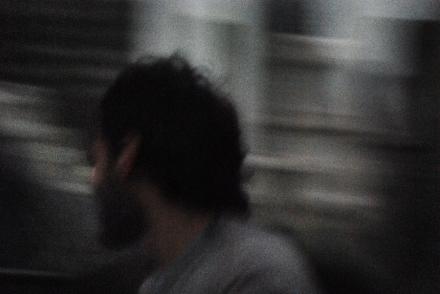
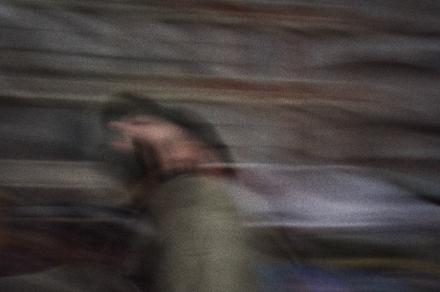

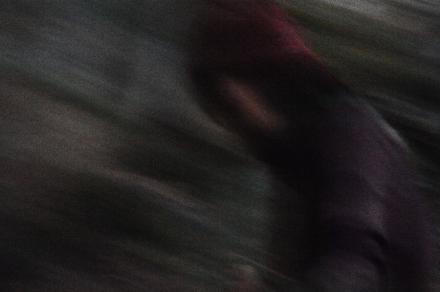
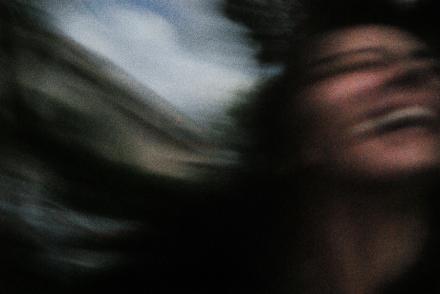
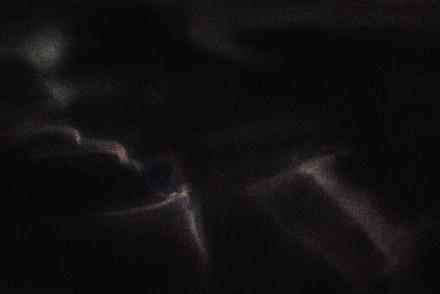
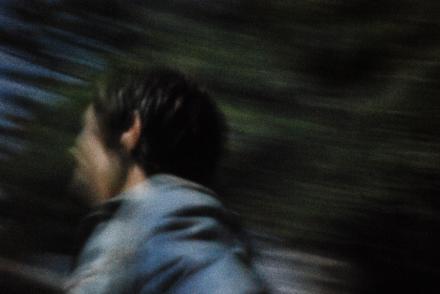
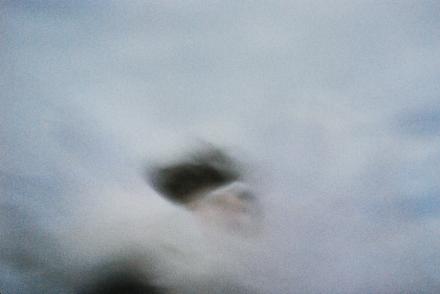
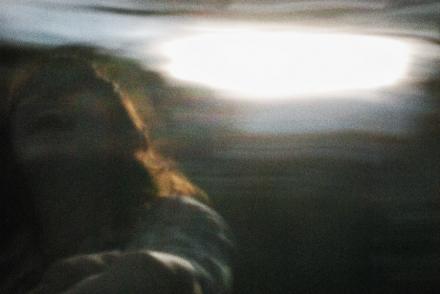
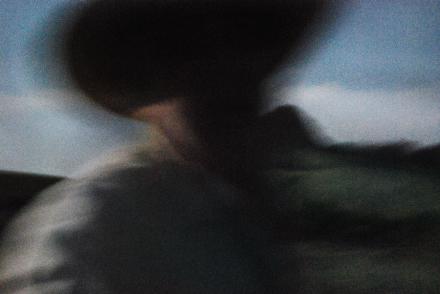
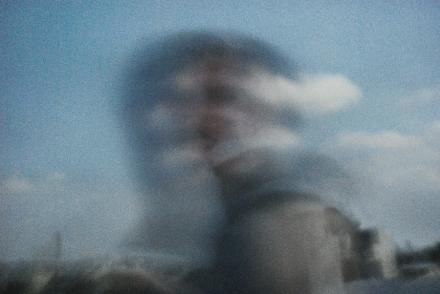
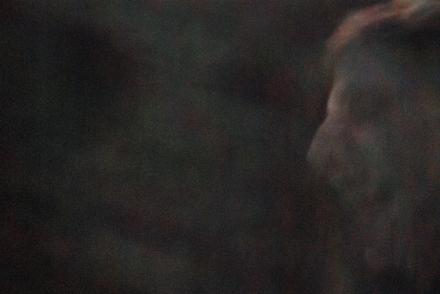
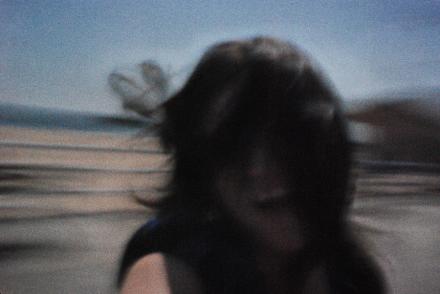
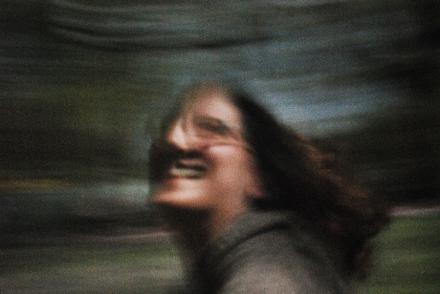
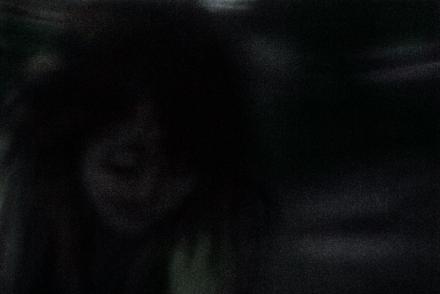
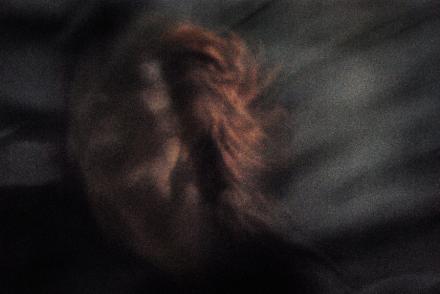





Ludmila Franca
said, January 18, 2009 @ 3:37 pm :
gUi mohallem rules!
he is simple the best!
ghuga tavora
said, January 18, 2009 @ 6:15 pm :
I´ve lived it as well, it´s fascinating the surrealistic results of images, feels like reality to me, all movement, nothing stays the same.;) Great work gUi!;) Cheers!
Dominique Chanovre
said, January 19, 2009 @ 4:06 am :
Amazing work, a captivating insight of the darkness in the void.
La fotografia nei documentari di Hu Jie
said, January 19, 2009 @ 8:58 pm :
[...] poi mi sto abituando e rassegnando, sia mai che la solitudine della citazione di Rilke nell’intervista a gUi mohallem non sia davvero di qualche [...]
Danx
said, January 21, 2009 @ 12:21 am :
oddia, tutta questa gente intrisa di nero non mi da alcuna speranza
Wagner
said, January 28, 2009 @ 2:47 pm :
Olá querido mestre quanto tempo……muito legal ficaram suas foto ….poxa nunca tinha feito e nem sabia fazer pinhole colorida mas estão otimas ….
Parabéns e boa aventuras pelo o mundo que é pequeno para o seu olhar até mais……..(>..<)………
Rafael Castellar das Neves
said, January 29, 2009 @ 1:28 pm :
Ciao!!
Bellissima composizione delle immagini e parole….mi piace troppissimo!
Salute brasiliane…
eugenio
said, April 3, 2009 @ 8:50 am :
Muuito interesante, obrigado pelo seu trabalho de alto niveo. Um olhar especial, parabens querido! que deus te abençoe
Amnesia « sketchmood
said, February 4, 2010 @ 12:08 am :
[...] link Posted by wonderlandofmodernity Filed in photography Tags: fotografia Leave a Comment » [...]